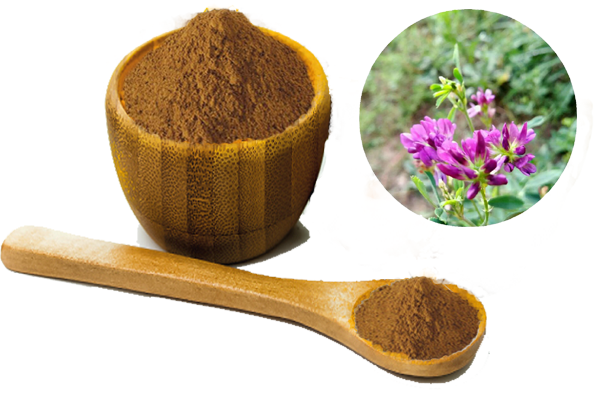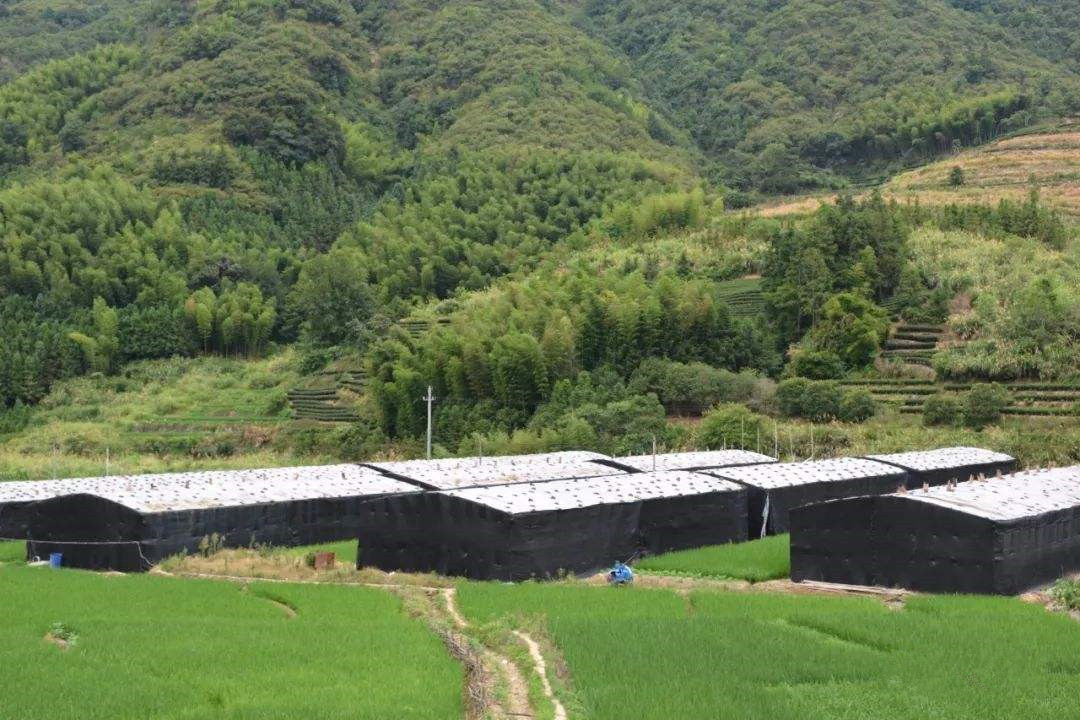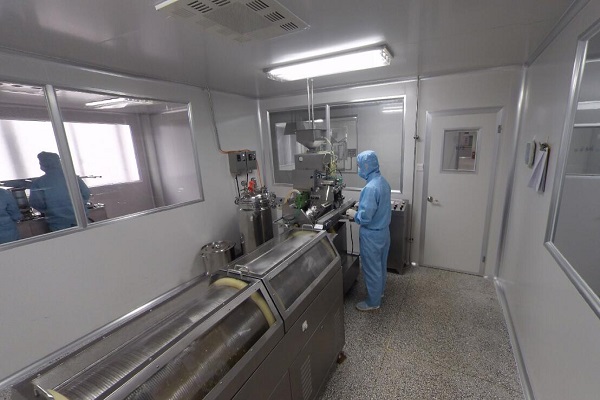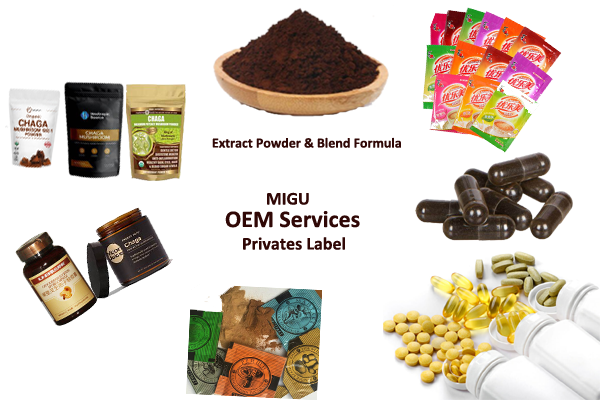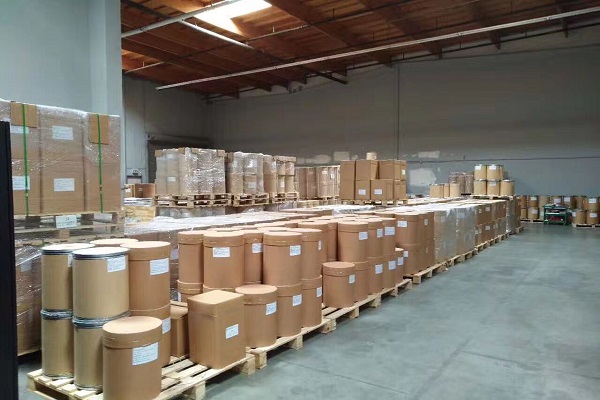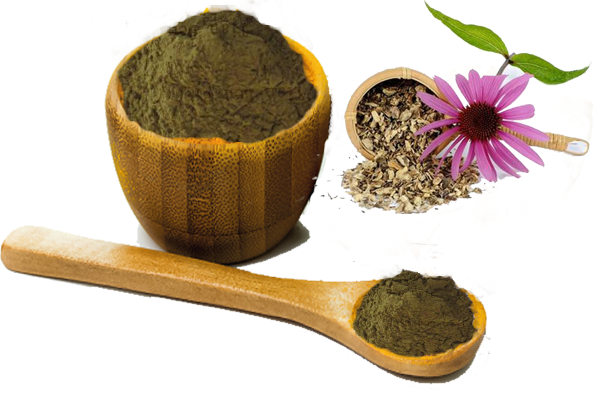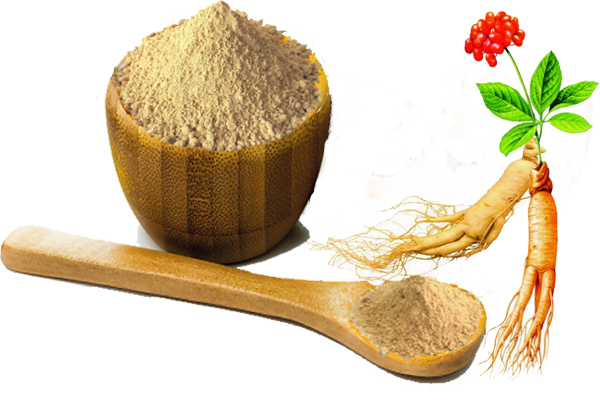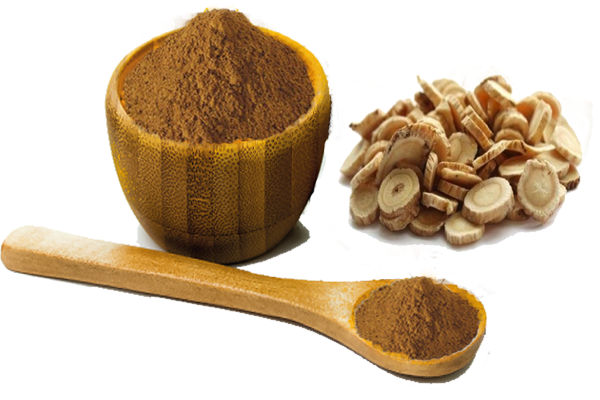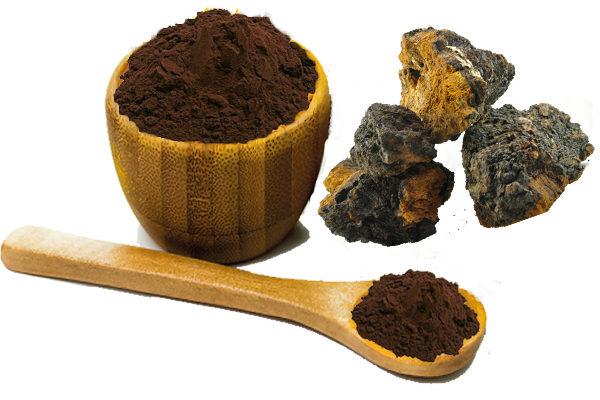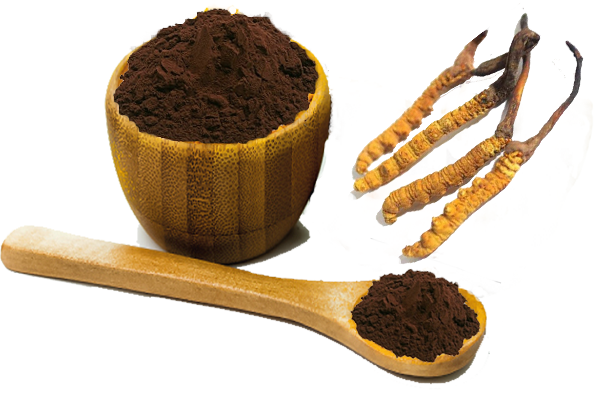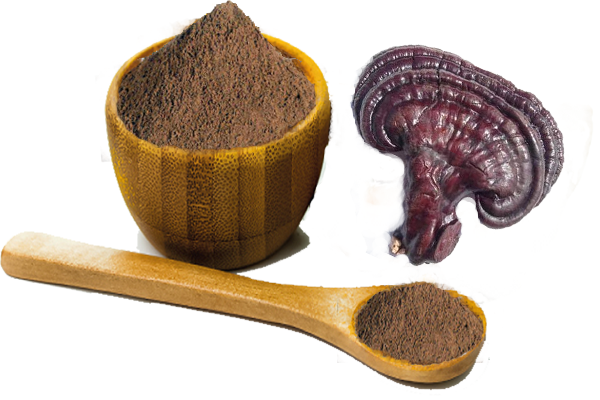Alfalfa Extract
Original: Medicago sativa L Supplied Specification: 10:1 , 20:1, 30:1, 50:1 by TLC and Customized Appearance: Brown yellow fine powder Standard Package: 1kg/bag, 5kg/bag, 25kg/drum and others customized package (More other TCM botanical extract, please check here )
About the Alfalfa
Purple alfalfa, a perennial herbaceous plant of the legume family, has upright, clustered or creeping stems, forming a quadrilateral shape and many branches; The stipules are larger, ovate and lanceolate, and the leaflets are inverted oval shaped and elongated; Flowers are clustered racemes; The pedicel is in the shape of a revered bell, and the corolla is purple; The fruit is spiral shaped and turns brown when ripe; The seeds are small and smooth, yellow or brown in color; The flowering period is from May to July, and the fruiting period is from June to August. It is named purple alfalfa because its flowers bloom purple.
Purple alfalfa is native to western Asia and mainly distributed in the middle and lower reaches of the Yellow River and northwest regions of China. It is widely distributed in the northwest, north China, northeast, and east of China, with occasional small communities in the central and northern parts of Garze Prefecture. [11] Purple alfalfa prefers warm and semi humid to semi-arid climates, with strong cold resistance; Suitable for planting in sandy or deep black soil with good drainage, sufficient moisture, and fertile soil; The main reproductive method of alfalfa is seed reproduction.
Purple alfalfa has effects such as relieving cough and asthma, treating neuralgia caused by poor bowel and bowel movements, and these effects are recorded in the Records of Famous Doctors.The content of vitamin K in the tender stems and leaves of alfalfa is high, and it has strong regeneration ability. It is a good livestock feed and also a good green manure crop. In terms of ecological value, purple alfalfa can be used as a plant for soil and water conservation and slope protection

alfalfa extract from MIGU
Active Ingredients of Alfalfa Extract
Alfalfa saponins: Alfalfa saponins are unique bioactive substances extracted from alfalfa, which are cyclic acetals formed by dehydration and condensation of sugar hydroxyl groups or non sugar compound hydroxyl groups in the form of aldehyde chains (glycosidic chains). Alfalfa plants contain nearly 60 types of saponin compounds, all of which are pentacyclic triterpenes of the oleanol type. The content of saponins in alfalfa varies depending on the variety, location, and growth period. Although the proportion of total saponin content in flowers and seeds is relatively high, their yield is small and low, and the proportion of total saponin content in alfalfa leaves is not much different from that in seeds. Therefore, leaves are a good material for extracting alfalfa saponins. The content of alfalfa saponins is highest in the tender bud stage and lowest in the withering and yellowing stage. With the extension of the growth cycle, there is a gradually decreasing trend.
Flavonoids and Isoflavonoid Substances: The alfalfa genus contains over 80 types of flavonoid compounds, including flavonoids and their glycosides, flavonols and their glycosides, isoflavones, isoflavones, chalcones, dihydroflavonoids, dihydroisoflavones, and roseolanes. Chinese scholars isolated 7 compounds from the chloroform and n-butanol extracts of alfalfa plants, and identified their structures as apigenin-7-O, respectively- β- D-glucoside, luteolin-7-O- β- D-glucoside, uracil nucleoside β- Methyl glucopyranoside, apigenin, alfalfa extract, and 7,4 ‘- dihydroxyflavonoid.
Coumarin: Alfalfa contains coumarins such as alfalfa phenols, alfalfa lactones, alfalfa estrogens, and alfalfa alcohol. In addition, alfalfa also contains substances that are beneficial to the human body, such as growth promoting factors and plant proteins.
Pharmacological effect and function of Alfalfa Extract
Lowering cholesterol and blood lipid levels: The alfalfa diet can prevent the formation of hypercholesterolemia in experimental animals and also reduce their hypercholesterolemia. The effect of alfalfa is believed to be mainly caused by its alfalfa saponins. Research has shown that alfalfa saponins can significantly reduce serum cholesterol in hypercholesterolemic rats and promote the clearance of low-density lipoprotein (LDL) through non receptor pathways (monocyte macrophage system). This suggests a meaningful pathway for finding effective drugs to treat familial hypercholesterolemia (FH). Experiments have shown that alfalfa saponins can significantly convert cholesterol in the liver of rats into bile acids. The net excretion of total and acidic sterols in feces of mice fed with alfalfa saponins significantly increased compared to the control group, indicating that alfalfa saponins have the effect of blocking the intestinal and hepatic circulation of bile acids, thereby promoting the autogenous excretion of cholesterol. Saponins can reduce cholesterol levels in animal and human organs and plasma. The use of saponins from alfalfa seeds can clinically reduce cholesterol and triglycerides in human blood, and also alleviate angina pectoris in coronary heart disease by improving blood circulation in the coronary arteries.
Regression of atherosclerotic plaque: alfalfa saponins can promote atherosclerotic plaque. It is known that NO plays a key role in maintaining vascular homeostasis. It can inhibit the formation of atherosclerosis by inhibiting the activation and adhesion of leukocytes, preventing platelet adhesion and aggregation, inhibiting the proliferation of smooth muscle cells and preventing the formation of foam cells. Alfalfa saponins can prevent the formation of atherosclerosis by promoting the release of NO from endothelial cells, thus proving the mechanism of alfalfa saponins promoting the regression of atherosclerotic plaque to a certain extent.
Regulating immune, antioxidant, and anti-aging functions: Flavonoids can significantly enhance the carbon clearance function of mouse monocytes and macrophages. Isoflavonoid extracts can inhibit the decrease of thymic index and improve the phagocytic function of monocytes and macrophages. Isoflavones can dose-dependently enhance ConA induced lymphocyte proliferation and NK cell activity in vitro, thereby exerting immunomodulatory effects. Flavonoids and isoflavones in alfalfa can eliminate free radicals during the chain initiation stage and directly capture free radicals in the reaction chain during antioxidant reactions, blocking free radical chain reactions through phenolic hydroxyl groups. Eating alfalfa food year-round can supplement flavonoids, prevent cancer, prevent osteoporosis and prostatitis, reduce the incidence of cardiovascular diseases, and alleviate menopausal discomfort in women. Flavonoids and isoflavones have strong antioxidant functions, which can clear reactive oxygen species in the human body, protect lipids, proteins, and chromosomes from reactive oxygen species attacks, prevent cell damage, enhance immunity, and delay aging. More Scientific research and development , please check here



